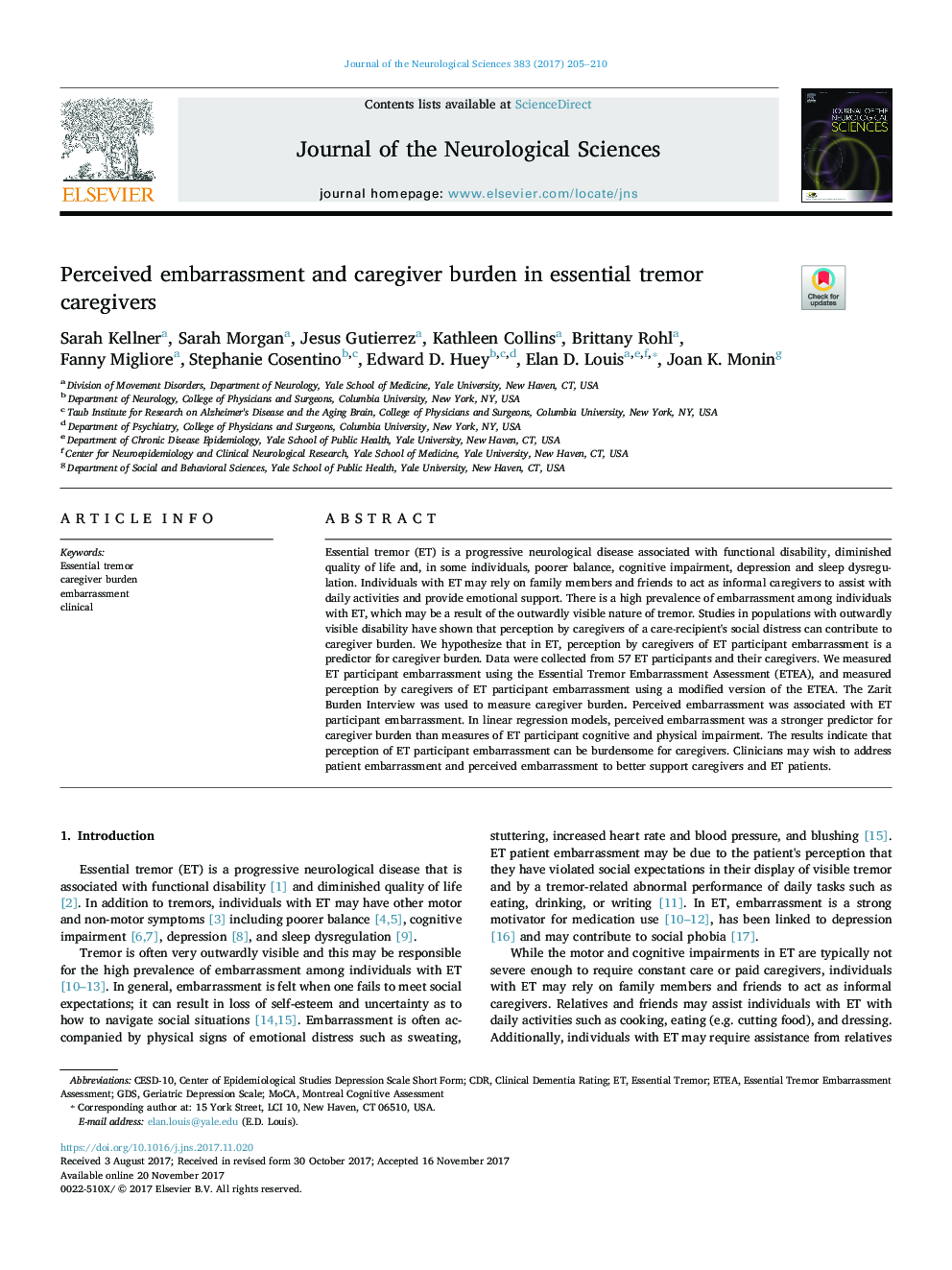| Article ID | Journal | Published Year | Pages | File Type |
|---|---|---|---|---|
| 8273234 | Journal of the Neurological Sciences | 2017 | 6 Pages |
Abstract
Essential tremor (ET) is a progressive neurological disease associated with functional disability, diminished quality of life and, in some individuals, poorer balance, cognitive impairment, depression and sleep dysregulation. Individuals with ET may rely on family members and friends to act as informal caregivers to assist with daily activities and provide emotional support. There is a high prevalence of embarrassment among individuals with ET, which may be a result of the outwardly visible nature of tremor. Studies in populations with outwardly visible disability have shown that perception by caregivers of a care-recipient's social distress can contribute to caregiver burden. We hypothesize that in ET, perception by caregivers of ET participant embarrassment is a predictor for caregiver burden. Data were collected from 57 ET participants and their caregivers. We measured ET participant embarrassment using the Essential Tremor Embarrassment Assessment (ETEA), and measured perception by caregivers of ET participant embarrassment using a modified version of the ETEA. The Zarit Burden Interview was used to measure caregiver burden. Perceived embarrassment was associated with ET participant embarrassment. In linear regression models, perceived embarrassment was a stronger predictor for caregiver burden than measures of ET participant cognitive and physical impairment. The results indicate that perception of ET participant embarrassment can be burdensome for caregivers. Clinicians may wish to address patient embarrassment and perceived embarrassment to better support caregivers and ET patients.
Keywords
Related Topics
Life Sciences
Biochemistry, Genetics and Molecular Biology
Ageing
Authors
Sarah Kellner, Sarah Morgan, Jesus Gutierrez, Kathleen Collins, Brittany Rohl, Fanny Migliore, Stephanie Cosentino, Edward D. Huey, Elan D. Louis, Joan K. Monin,
